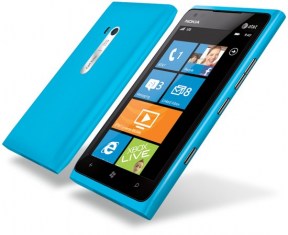Well, after months of breathless waiting (and a Nicki Minaj concert in Times Square), Nokia’s Lumia 900 is finally sitting pretty on store shelves. If you haven’t heard about AT&T’s newest handset yet, you soon will: AdAge reports that the nation’s second largest wireless carrier will be spending up to $150 million to promote the Lumia 900 over the coming months.
It seems like a hefty sum to throw behind a Windows Phone of all things, and it’s reportedly even more than the carrier was thought to have spent on pushing the iPhone.
AT&T is certainly no slouch when it comes to advertising budgets — according to a report released by advertising research firm Kantar Media last year, AT&T spent a total of $451.83 million on wireless advertising in Q1 2011, with just shy of $101 million of it devoted to iPhone advertising. Meanwhile, Verizon Wireless (who at the time had just released the CDMA iPhone 4) spent a comparatively small $227 million on wireless advertising, only $34.5 million of which was iPhone specific.
That AT&T is reportedly spending more on the Lumia 900’s ad budget than they did when their biggest rival began selling a ridiculously popular phone is rather telling. While the iPhone still accounts for a considerable majority of AT&T’s customers, nearly everyone is getting in on that act. Verizon aside, there’s Sprint, C Spire Wireless, and a whole host of regional providers itching to launch the iPhone 4 and 4S within the next few weeks. The edge AT&T enjoyed simply because they were special friends with Apple is gone, and now they have to help groom another device to capture people’s imaginations (and wallets).
For what it’s worth, the Lumia 900 may well be the right Windows Phone at the right time with the right price. As AdAge’s Kunal Surur points out, Verizon’s customer base is largely made up of Android customers, thanks in large part to the carrier’s aggressive Droid branding and advertising campaign. AT&T isn’t known as a destination for Android devices as much as Verizon is, so it’s perhaps natural that they decided to back the fledgling Windows Phone platform going forward. AT&T has always been supportive of Windows Phone (they were a big backer of the platform when it first launched), and this big ad push could end up paying off handsomely, but we’ll only know for sure once this initial dust has settled.
